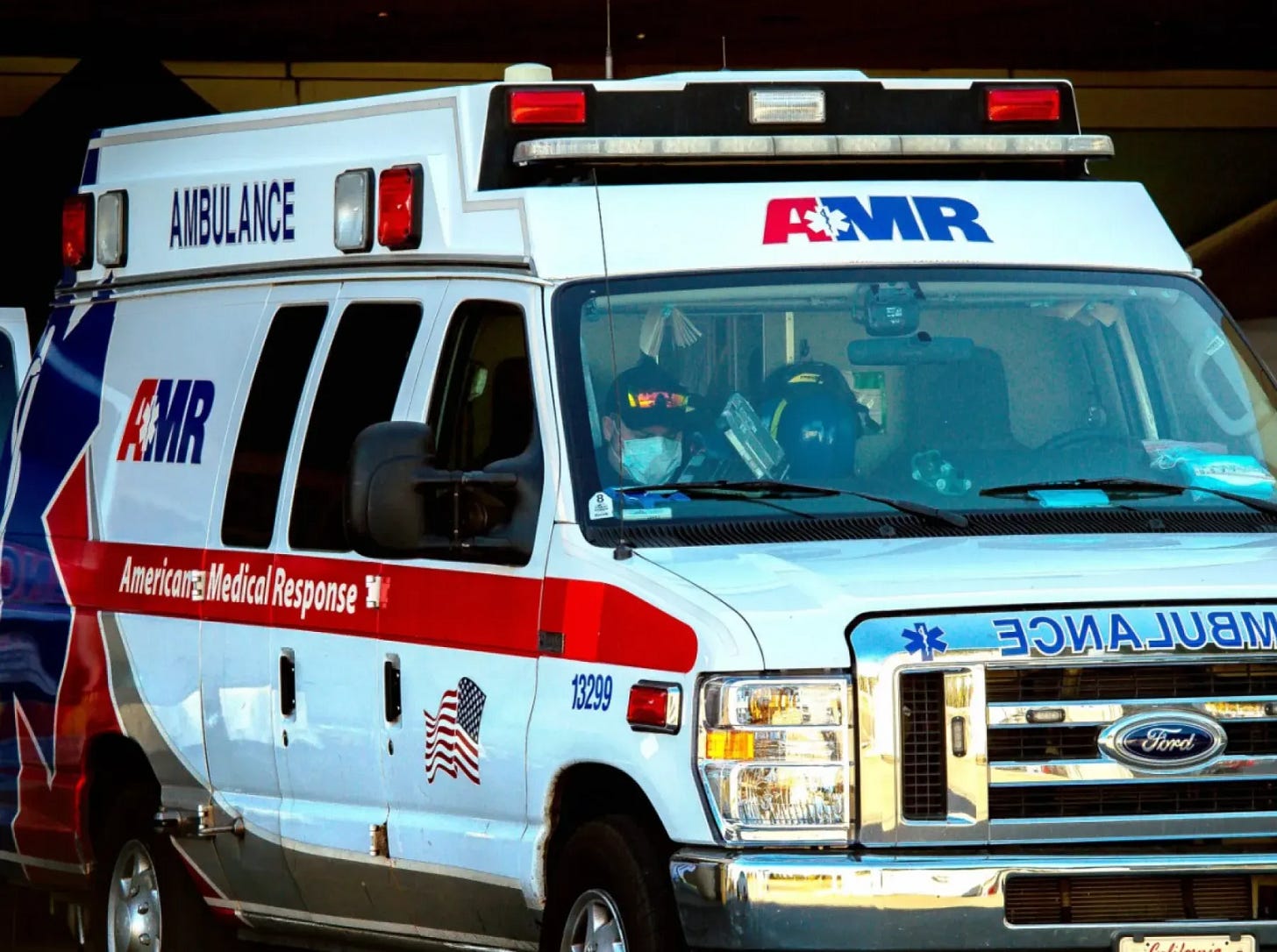Why do we need AMR ambulance system?
A publicly owned system would end duplication, improve quality

Portland and Multnomah County receives badly compromised ambulance service, and I’m not referring merely to last year’s political compromise allowing American Medical Response to staff each ambulance with only one full paramedic. County Chair Jessica Vega Pederson made the qualifications of the second person on the ambulance a paramount issue, even at the cost of greatly diminishing the capacity of AMR to respond at all to emergency calls.
Now that the second crew member on the ambulance can be an emergency medical technician, response times and reliability have improved, though insufficiently.
Why aren’t we discussing the fact that our medical first responder system is duplicative and needlessly expensive? Portland Fire & Rescue is first on the scene at most local emergencies. It has more stations, more vehicles and better trained paramedics than AMR, which struggles to hire ambulance drivers and then often rushes them into service with minimal training.
The fire bureau responds because they usually have nothing better to do and can get there quicker to provide immediate life-saving assistance. AMR arrives later and takes the patient to the hospital, for which it collects high fees unmitigated by the “heavy lifting” provided at the scene by fire crews.
What if we cut out the “second responder” and allowed the fire bureau to bring the patient to the hospital? This would add some expense to PF&R, which might need new vehicles and more staffing, but it would not have to build a system from the ground up.
People suffering medical emergencies would not be stuck with $3,000 bills because fire bureau overhead is already covered by taxes. Free or minimal charges are the norm for publicly funded ambulance systems. It is not novel. About half of American cities have public ambulance systems.
A transition would be complicated and perhaps more difficult than I can imagine. But the current system is complicated, creates hardships for the public and promises no improvement in time. Portland policymakers in the new charter era should be applying some fresh eyes to this issue.



As someone who spent (far too much) time in EMS in a major city, I’m afraid you have wildly simplified what would be involved with a transition to this both logistically and financially. I also want to call out that you referred to to EMS as “ambulance drivers”. This is a long-outdated term for back when EMS had no medical training and using it now diminishes what they can do on an ambulance.
I think you are also not separating EMT basics (EMT-B) and paramedics (EMT-B). EMTs that PF&R have the same certification as those that work for AMR. In reality, the vast majority of 911 calls don’t need a paramedic. Yes, paramedics and EMT-Bs in a system that isn’t fire-department based aren’t paid well, but this is a national issue. Also, you can have great paramedics working for non-fire department ambulance services and you can have incompetent paramedics working for fire-based EMS.
I could delve into more nuances of the way ambulances are staffed or response times but for the sake of retaining some sense of brevity I’ll move on from this part. When it comes to major things that PF&R would have to take on, it is billing, medical direction, pharmaceutical supplies, fleet (including maintenance), a constant hiring and training process due to the high burnout rate in EMS…this is just a start of the major list.
There are some cities that have what is called third service EMS. In cities like those there is an ongoing debate about just having more ambulances and more staff due to the financial and time waste of having a fire engine or truck show up on every call. I mention this to illustrate that some cities are not finding it makes sense financially to have the fire department more involved, but the these conversations have been going on for probably two decades.
At the end of the day this all requires far more money than the city has, not to mention a lot of patience as this would take a long time to transition. So while I think you bring some interesting ideas to the table through your publication I’m afraid this misses the mark.